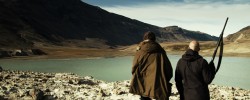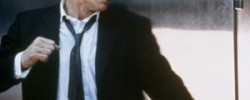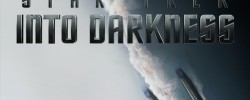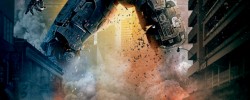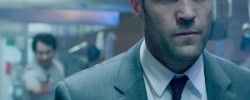
Get Off My Plane: Presidents in Danger

What is it that we find so fascinating about fictional presidents in mortal danger? The question comes to mind after two similarly themed films came out within months of each other, Olympus has Fallen (2013) and this weekend White House Down (2013) both dealing with the attack and seizure of the White House with the President inside. It’s a fascinating phenomenon that is not limited to 2013.
Back in 1964, there were no less than three films that depicted the President and the country in danger. First, in early January Fail-Safe depicted an ultra-serious situation in which a general orders the deployment of nuclear weapons on the Soviet Union and President Henry Fonda (he’s not given a name beyond ‘The President’) has to get an abort and is working with the Soviet Prime Minister. Two weeks later, Stanley Kubrick’s Dr. Strangelove, or How I Learned to Stop Worrying and Love the Bomb premiered, based on the same novel as Fail-Safe but taking a darkly comic stance shows Peter Sellers’ President Muffy trying to speak to a drunken Soviet PM Dmitry. These films were literally weeks apart and used the same source material to convey utter terror, though one treated the scenario with much more severity than the other. Then, slightly less than a month after Fail-Safe, Seven Days in May shows the head of the Joint Chiefs of Staff (Burt Lancaster) planning a military coup because he and the other generals (save the Chair of the Navy who is not involved but knows of the plan) disagree with a nuclear arms treaty with the Soviet Union. All of these films put the President in extraordinary danger without any fight sequences.

Flash forward to the 1990’s. Yes, there were some Government paranoia films in the ‘70s and some Soviet fear-mongering films in the ‘80s but it’s the ‘90s that saw the President in real physical danger. Independence Day (1996) saw the President flying a jet against aliens and in the ultimate expression of a President in danger, 1997’s Air Force One shows President Harrison Ford fighting terrorists singlehandedly on Air Force One. Why? Because he’s Han Indiana Solo-Jones-Deckard, that’s why.
Wolfgang Peterson’s film for the first time shows the President literally taking up arms and fighting an earthly enemy. Other films, like Independence Day did show some actual physical aggression but towards an otherworldly force. Now, the President is a Medal of Honor winner and Vietnam Vet who “knows how to fight”.
Why is that such a rush? Why do we want to see the leader of the free world shooting people? Is it that we want to see a politician actually doing something? Or is it more than that? Are these films showing a President literally doing what they are figuratively doing all the time, which is fighting for our country? I realize that places a lot of depth otherwise not associated with these actioners, but I think that may be it. After all, isn’t the President (no matter who it is, from either party) always saying they are fighting for us as Americans? Don’t they always say something in the neighborhood of “I’m fighting for you”?
The question is always begged, how are you fighting for us sir (unfortunately we have not yet had an instance where I must place a /madam)? If one follows the ins and outs of politics, one can see how a President is or is not fighting for his country, but if one is not that politically engaged it’s easy to miss. It’s all done with speeches and papers, declarations and summits, agreements, ideas and plans. In other words, very little concrete evidence of anything actually being done.
But: when we see Harrison Ford or Jaime Foxx picking up a machine gun (and even a rocket launcher in White House Down) we see a President physically fighting with purported evil. He or she (in movies I can use that) is literally hitting the bad guys where it hurts, normally in their stomach or face.
It’s also interesting to note that there has never been a film made where the name of an actual President is contending with these outrageous scenarios. We don’t want to see our real President in danger, that’s terrifying (especially if the Vice President isn’t necessarily one we want to see in the big chair…Looking at you Agnew, Quail, Cheney and if I’m honest with myself, Biden) and would put too much of a real world connotation on the proceedings. We want our real President safe and secure from all alarms, no matter if we agree with their politics or not. But a fictitious one? Sure! Shoot at his limo with rockets and machine guns! Make him put down the phone and pick up a gun! Make him physically back up a brash new policy with his fists! He’s not real!
I think these films are a sublimation of our own frustration with the political process and how much we really don’t understand how our government works, unless we follow the news constantly. There is little that is visceral in politics, unless it’s the House of Commons in England, Australia or continental Europe where representatives actually punch each other. But in the U.S., we just stick to name calling and how many can pay attention to that kind of bickering? We may actually need these kinds of films to keep going in this great experiment of ours. Even if they usually aren’t very good films, they provide an outlet for our frustrations and show us a government in force doing something, even if it is shooting a bunch of people.
Related Posts
Doug Heller
Latest posts by Doug Heller (see all)
- Get Off My Plane: Presidents in Danger - June 30, 2013
- Review: Copperhead (2013) - June 29, 2013
- Review: White House Down (2013) - June 29, 2013
-
Ben

















